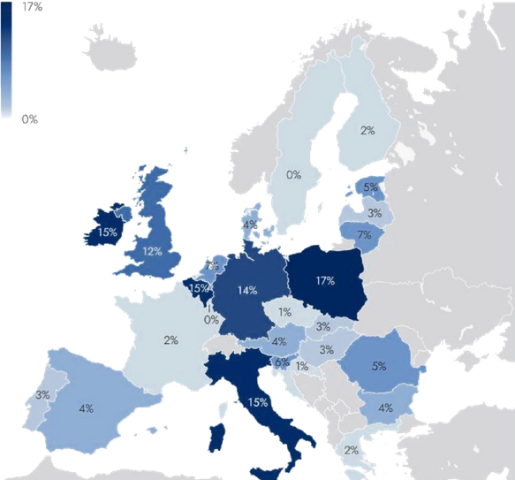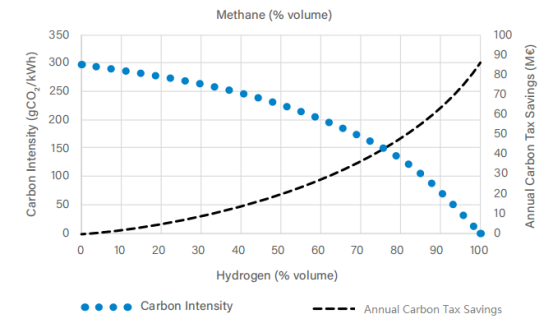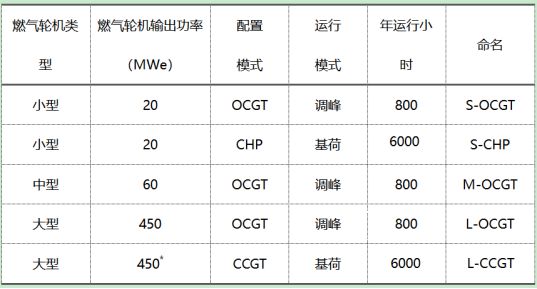Huatian Technology Economic Case Study "Hydrogen Energy Deployment in Gas Turbine Centralized Power Generation"
Gas turbines play an important role in achieving energy transition and net zero emissions in future energy systems. When running on hydrogen fuel, the carbon dioxide emissions of gas turbines are zero, while also providing grid stability and demand support for intermittent renewable energy sources such as wind and solar power. Gas turbine manufacturers are committed to developing the most advanced technology capable of 100% hydrogen operation by 2030. However, there is still a gap in understanding the economic and political conditions under which this technology can be pushed to the market.
Huatian Aviation Power aims at the development direction of the global hydrogen energy industry, conducts in-depth research on the technological development and practical application of hydrogen gas turbines, and compiles this article in order to provide reliable technical support and practical experience for the deployment of hydrogen energy in centralized power generation of gas turbines.
1、 Hydrogen energy is a key pillar for achieving the transition from energy to carbon neutrality
In July 2020, the European Commission released the "European Climate Neutral Hydrogen Strategy", emphasizing the specific and important role that hydrogen will play in supporting the EU's net zero carbon emissions target by 2050. Through this strategy, hydrogen energy has become a key pillar in supporting the European Green Deal and gradually achieving the ideal of energy transition to carbon neutrality. Hydrogen can help achieve deep decarbonization in industries such as industry, transportation, heat and power generation.
Safe, stable, and decarbonized power generation through gas turbines and fuel cells will also play a role in hydrogen energy terminal applications. The International Energy Agency's 2050 Net Zero Emissions Report predicts that by 2050, 17% of global hydrogen will ultimately be used in the power sector. Annual hydrogen production by 2050 is expected to be aroundFor 8.8 × 107Ton, equivalent to the total annual hydrogen production worldwide today. In fact, in the 2050 net zero emissions scenario set by the European Union, the use of hydrogen in the electricity sector is recognized as well as in transportation, industry, and residential applications. In addition, the latest report on the European Hydrogen Backbone Network project, compiled by ten leading European natural gas transport companies and two renewable natural gas industry associations, outlines the future role of hydrogen in power generation across Europe. It is expected that by 2050, Europe will require 626 TWh of hydrogen for electricity generation, much higher than the 12 TWh in 2030. Therefore, in establishing a hydrogen economy, there will be a huge demand for hydrogen. By 2050, this is equivalent to 7% of Europe's electricity generation, with hydrogen power accounting for 17% of Poland's total electricity generation, 15% in Ireland and Italy, and 14% in Germany.

Gas turbines, including combined cycle (CCGT) and open cycle (OCGT), have played a key role in decarbonizing the energy transition in Europe by achieving coal to gas conversion. Gas power generation has replaced nearly 50% of the decrease in coal-fired power generation in 2019, resulting in a significant reduction in CO2. At the same time, with the further increase in installed capacity of renewable energy (wind/solar/hydro), gas power generation can ensure the safety of power supply. In addition to power generation, decarbonized gas turbines can also generate useful heat in combined heat and power (CHP) or waste heat power generation applications, enhancing the coupling between industrial and regional heating while improving overall energy efficiency. As the installed capacity of renewable energy increases, gas turbines are used to meet peak electricity demand when the availability of renewable energy is low. Therefore, green hydrogen can serve as a long-term storage method for renewable energy, and hydrogen fueled gas turbines can operate together with other renewable energy sources to fill the gap in electricity demand. If biogas reforming and CCS are used to produce hydrogen, there is indeed a chance to operate hydrogen gas turbines with net negative carbon emissions. Therefore, if the EU wants to achieve net zero carbon emissions by 2050, it must analyze the potential costs and feasibility of decarbonizing gas turbines through the use of hydrogen.

Carbon intensity and annual carbon tax savings of natural gas blended with hydrogen gas turbine combined cycle
(Assuming a carbon price of 50 euros/ton and an annual operation of 6000 hours)
2、 Research scenario and purpose
Given the wide range of power levels (from kWe to MWe), configurations (OCGT, CCGT, and CHP), and applications (base load, peak, mechanical drive) of gas turbines, it is necessary to focus the analysis on selected scenarios that will affect the current, near, and future operation of hydrogen gas turbines. Table 1 presents the selected scenarios for this study, each of which will also consider 100% natural gas baseline conditions.

Table 1The hydrogen gas turbine configuration considered in this study
The purpose of this technical and economic research is to provide a method for measuring the cost and feasibility of current and future gas turbine hydrogen blending or pure hydrogen decarbonization power generation. By using publicly available cost information and data provided by members of the ETN organization, a levelized cost of electricity (LCOE) is generated for each scenario to identify the key mechanisms for achieving zero carbon operation of gas turbines. The research findings will enable policy makers, gas turbine manufacturers and users, as well as hydrogen value chains, electricity consumers, investors, and the public, to understand the key role that decarbonized gas turbines can play in the energy transition, and provide the EU with a flexible, safe, and net zero emission energy system.
3、 Research results
This technical and economic research has solved the economic problem that limits the commercialization of this technology by conducting a detailed cost analysis of the use of hydrogen in dispatchable thermoelectric applications. Given the existing installed gas turbine asset base in the EU, the focus is on the potential to transform these assets to replace hydrocarbons with hydrogen.
The analysis concludes that for high-efficiency hydrogen gas turbine cycles (such as CCGT), the levelized cost of electricity (LCOE) is expected to increase by at least 60%, mainly due to the impact of hydrogen prices, which can account for over 80% of the LCOE of hydrogen gas turbines. For low efficiency gas turbine cycles (such as peak OCGT), hydrogen blending between 30% and 70% may not be economically competitive compared to pure natural gas, as operators need to pay for increased retrofit and hydrogen costs, as well as carbon emissions. In terms of carbon cost, the current cost is too low to guarantee a shift in fuel from natural gas to hydrogen. The breakeven carbon cost of hydrogen gas turbines (compared to equivalent natural gas) is shown to be between 150 euros/ton and 225 euros/ton. This is approximately 2 to 3 times the current price of the EU Emissions Trading System (ETS), but it is worth noting that this price has more than doubled year-on-year in 2021.
In order to make the future development and implementation of hydrogen gas turbines in Europe possible, this study identified six key areas for policy support, research and development, and demonstration. These key areas include reducing hydrogen costs, increasing carbon costs, developing hydrogen energy infrastructure, coupling hydrogen energy fields, researching and developing hydrogen combustion technologies, and transferring hydrogen knowledge.




